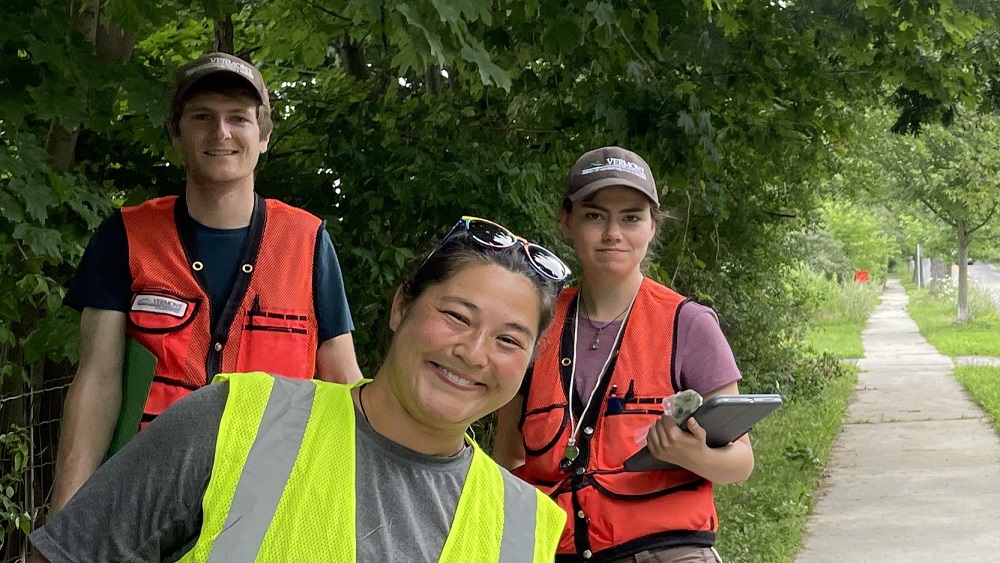
*Image: Emilie Inoue (center) and Plant Health partners
By Sonia Howlett - Vermont Agency of Agriculture, Food & Markets - IDEA Team Member
The words we use to frame a topic influence how we think about that issue. The Vermont Agency of Agriculture, Food and Markets’ Plant Health team recognizes the importance of the language we use as a state agency. In collaboration with statewide partners, they hope to reframe the way Vermont regulators and scientists talk about managing introduced species.
Historically, the Plant Health team and their statewide partners described their goals as “smothering”, “destroying”, “eradicating’ or “fighting” “invasive” species. Now, they are learning that this type of fear-based language might predispose us to think aggressively about things that are new or we don’t understand. Or it might make those of us with ties to other nations feel unwelcome since many so-called “invasive” species, like Japanese knotweed, Asian long horned beetle, or European Alder, are named after the foreign nations of their origin.
Plant Health remains deeply committed to controlling damaging species and preventing their introduction to Vermont. However, they are now thinking through ways to describe their work with “more positive, inclusive, cooperative, and compassionate language,” according to Emilie Inoue, Plant Health Section Chief. The Plant Health team hopes this shift will allow statewide rules and messaging to focus on the end goal: to preserve sensitive ecosystems and to prevent or reduce impacts (economic or environmental) from introduced species.
Research shows that emotionally charged language can influence how the public sees the world – and our strategies for responding. Using reactive language to describe the management of introduced species minimizes our ability to think creatively about solutions: it makes it harder to see the perspective from other angles, or to draw from indigenous wisdom. The current language is also inaccurate. “Eradication” is unlikely if not impossible for many highly competitive introduced species. And calling these species “invaders” ignores the role humans play and have played in their introduction and spread.
Emilie Inoue, Plant Health Section Chief, has worked for Vermont Agency of Agriculture, Food and Markets for 19 years. As someone who is part Japanese, she always flinched when aggressive words like “destroy” or “fight” were immediately followed by “Japanese” (beetles/knotweed/honeysuckle etc). Now, in conversations with partners across the state, she is realizing she wasn’t the only one having a negative response to that kind of phrasing.
Emilie credits the Inclusion, Diversity, Equity and Accountability (IDEA) team of the Vermont Agency of Agriculture, Food and Markets for helping build the culture on her team where these concerns could finally be talked about. “We always wanted to be agents of good,” Emilie shared, “but IDEA helped us make a space on our team where we feel comfortable talking about deep issues and seeing different perspectives.”
The Plant Health team is comfortable taking change slowly but are proud to have already found support from colleagues, Agency leadership and partner agencies across Vermont and the Northeast. This effort is starting to spread: the Vermont Land Trust shared an article on “5 plants to watch for this fall (and why we aren’t calling them invasives)”. Emilie was even featured on Vermont Public’s Brave Little State. “We’re talking about this, and we weren’t talking about this before,” says Emilie. “That’s already a huge success.”
Did you know?
Standard earthworms (the kind you grew up with in your garden) are not native to the Americas. They were introduced from Europe in the early 1600s and drastically changed our soil and land-based ecosystems at the time. Now, they are often considered a sign of healthy soil!
